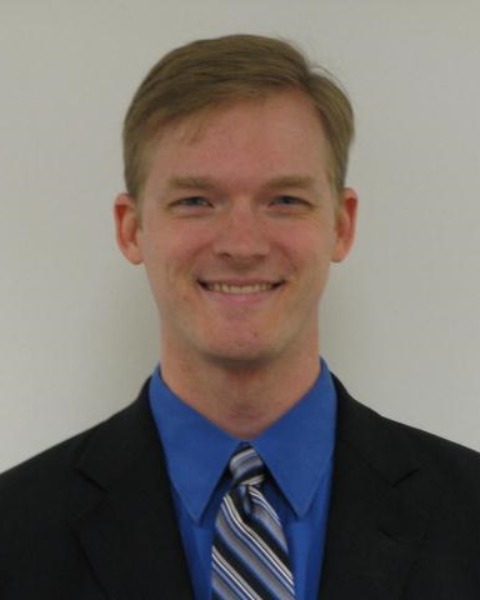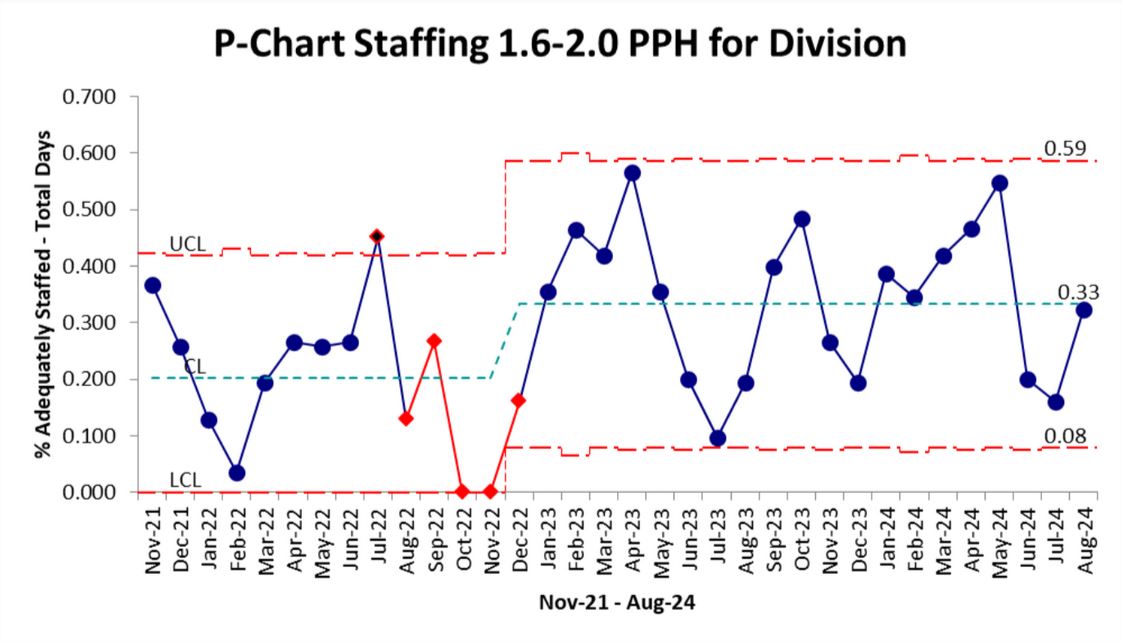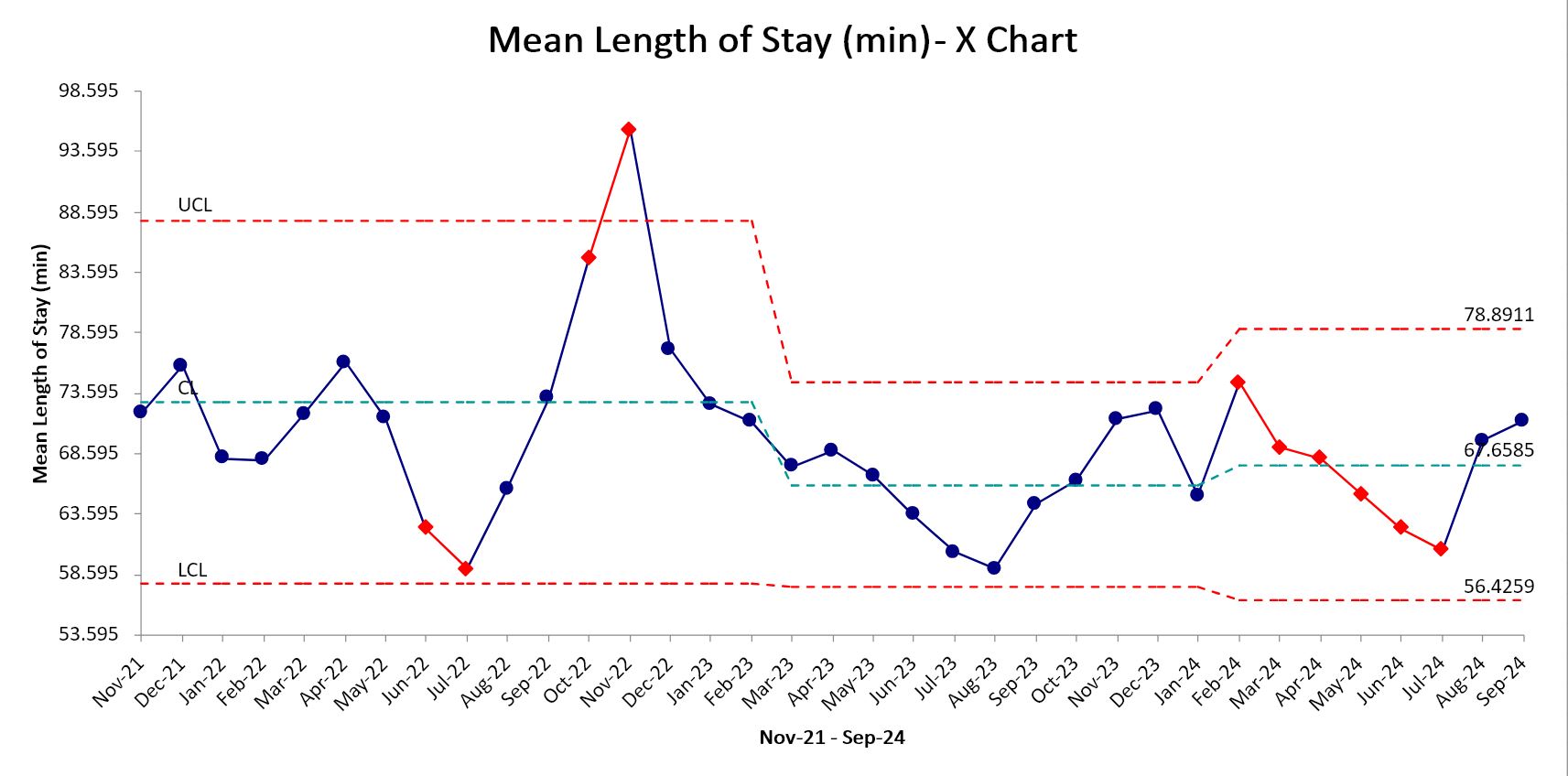Quality Improvement/Patient Safety 5
Session: Quality Improvement/Patient Safety 5
482 - Using a Data Driven Model to Increase Appropriately Staffed Days in a Clinical Setting with Highly Variable Daily Patient Censuses
Saturday, April 26, 2025
2:30pm - 4:45pm HST
Publication Number: 482.6576
David Skoglund, University of Missouri-Kansas City School of Medicine, Shawnee, KS, United States; Amanda Nedved, Children's Mercy Hospitals and Clinics, Lenexa, KS, United States; Jennifer Johnson, University of Missouri Kansas City, Overland Park, KS, United States; Carol E. Schmekel, Children's Mercy Hospitals and Clinics, Kansas City, MO, United States; Mollie Miller, Children's Mercy Hospitals and Clinics, Kansas City, MO, United States; Tiffany Addington, Children's Mercy Kansas City, LEES SUMMIT, MO, United States; Rebecca A. Eck, Children's Mercy Hospitals and Clinics, Kansas City, MO, United States; Penni L. Thompson, Children's Mercy Hospital, Kansas City, MO, United States; Amy E. Kihiu, Children's Mercy Hospitals and Clinics, Kansas City, MO, United States

David Skoglund, MD MS (he/him/his)
Pediatrician
University of Missouri-Kansas City School of Medicine
Shawnee, Kansas, United States
Presenting Author(s)
Background: In the urgent care (UC), adequate personnel is important for patient safety and team member well-being. However, variable daily patient censuses create the challenge of balancing safety and well-being with clinical productivity and fiscal responsibilities.
Objective: By using a data-driven staffing model, we aimed to increase the percentage of days that our UC was adequately staffed from 20.3% to 25% by June 30, 2024.
Design/Methods: We included daily patient censuses and clinician staffing at each of 3 UCs within a large Midwestern pediatric health system from November 2021 through August 2024. In November 2022, we implemented a staffing model that used daily patient census trends to anticipate staffing needs based on a productivity target of 1.8 patients per provider per hour (PPH). Using iterative Plan-Do-Study-Act (PDSA) cycles, we made improvements to the model to allow for rapid dissemination of revised staffing targets (Table 1). Leaders applied this model weekly and adjusted staffing targets for each site based on recommendations from the model.
We tracked the number of days that were appropriately staffed (1.6-2.0 PPH), overstaffed ( < 1.6 PPH) or understaffed (>2.0 PPH) for each UC. We measured the number of days where all 3 sites were appropriately staffed as our outcome. We evaluated the effect on mean length of stay (LOS) as our balancing measure.
Results: After implementing our staffing model in November 2022, we saw an upward shift of the center line for the percent of appropriately staffed days for the division from 20.3% to 33.3% (Figure 2). Additionally, each site experienced a significant increase in percentage of appropriately staffed days when using this model. UC A increased adequately staffed days from 56.7% to 71.3%, UC B from 58.4% to 63.6%, and UC C from 47.3% to 62.3%. Since implementing this model, our LOS has decreased from 73 minutes to 68 minutes (Figure 3).
Conclusion(s): Using a data-driven model to anticipate staffing needs in a clinical setting with highly variable patient censuses increased the percent of “appropriately staffed” days. Although our study is limited to UCs at a single institution, this model could be used in other clinical settings that have variable patient censuses to predict personnel needs. Future PDSA cycles will continue to integrate available data to anticipate patient census projections to inform personnel needs.
Table 1: PDSA Cycles of Staffing Model Improvements
.jpg) These changes to our staffing model were adopted using iterative PDSA cycles.
These changes to our staffing model were adopted using iterative PDSA cycles.Figure 2: P-Chart Staffing for Division
 This figure indicates the percentage of appropriately staffed days (1.6-2.0 PPH) throughout our urgent care system over time.
This figure indicates the percentage of appropriately staffed days (1.6-2.0 PPH) throughout our urgent care system over time.Figure 3: Mean Length of Stay
 This figure indicates the mean length of stay for patients in our urgent care system over time.
This figure indicates the mean length of stay for patients in our urgent care system over time.Table 1: PDSA Cycles of Staffing Model Improvements
.jpg) These changes to our staffing model were adopted using iterative PDSA cycles.
These changes to our staffing model were adopted using iterative PDSA cycles.Figure 2: P-Chart Staffing for Division
 This figure indicates the percentage of appropriately staffed days (1.6-2.0 PPH) throughout our urgent care system over time.
This figure indicates the percentage of appropriately staffed days (1.6-2.0 PPH) throughout our urgent care system over time.Figure 3: Mean Length of Stay
 This figure indicates the mean length of stay for patients in our urgent care system over time.
This figure indicates the mean length of stay for patients in our urgent care system over time.

